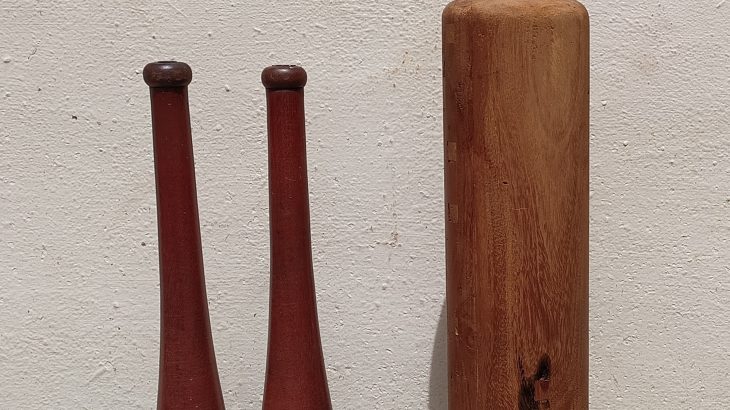I do not know the traditional Tamil name of this exercise. It is seen more commonly in the Karalakattai practice of the South than in the jori/meel practice of the North. That may be, because both of these practices differ in application. The Kalaris of the South are accessible to all ages and people of all physical capabilities, so there is a lot more emphasis on rehab and health maintenance, than the akharas of the North which are primarily focused on warrior training. The practitioners of the North are young and middle aged men who are in their prime to begin with. Most don’t need any rehab. I’m just guessing, is like to hear more of your thoughts on that.
Can be done with heavy or light clubs. Obviously, start light. There’s two versions broadly depending on whether
1 One hand without switching
2. One hand with switching
You can get further variation by calibrating how wide your swings are
Gives you a total of 4 variants in order of difficulty
1a. Low amplitude one hand without switch
1b. High amplitude one hand without switch
2a. Low amplitude with switch
2b. High amplitude with switch
Main Benefits
Excellent warm up
Great whole body mobility drill
Trains the spiral myofascial lines
Teaches you to be rooted to the floor
Trains side to side loading
Trains your feet to react to a load that is pulling and pushing from all around the body in a dynamic, but predictable fashion. Once you train that, you’ll be better prepared for an unpredictable loading pattern like in a collision sport (relatively speaking)
If the feet are used right in this exercise, it should correct flat feet that is due to disuse. Which is what the vast majority of population suffers from these days.
The rotation/twisting of the upper body relative to the feet is much more than you’d get in walking and day to day life. Training this movement, will make your core more resilient in the face of those day to day challenges. Since the movement is smooth and the load light, compared to a kettlebell, it is a far safer movement too.
It will help you release the chronically tight and weak hip flexors which are the bane of our sedentary population.
With the club crossing the midline repeatedly, and your eyes and head following that movement, you’re grooving primal neurologic patterns that will hold you in good stead, during day to day life.
Your grip needs to be smart and active. It needs to release and tighten and coordinate with your eyes, breath, and an external load.
The upper limbs which spend all day in a flexed, T-rex computer pose will have to straighten out (will be forced to straighten out) by the pull of the moving club.
Holding your head up straight and aligned will become a necessity if you do these for hundreds of reps. Automatic posture correction!
The movement can be used as active rest on a day after your hard workout, instead of lazing away on the couch. The gentle , smooth movement of this swing will promote recovery better than complete bed rest.
It is best to do this as a reflexive pattern, instead of consciously. You’ll need to do enough reps that you should be able to talk, think, listen, while your body continues to move, like you would do with walking. Some people will form these patterns rapidly. Some will need hundreds or even thousands of reps. However, making it reflexive is where most value will be obtained.
You can turn it into a workout by itself, if you increase the amplitude and velocity of these swings, but I prefer the slower, more relaxed version for most people.
At that point, you’re going to be able to turn the movement into a form of meditation, or a form of active rest.
